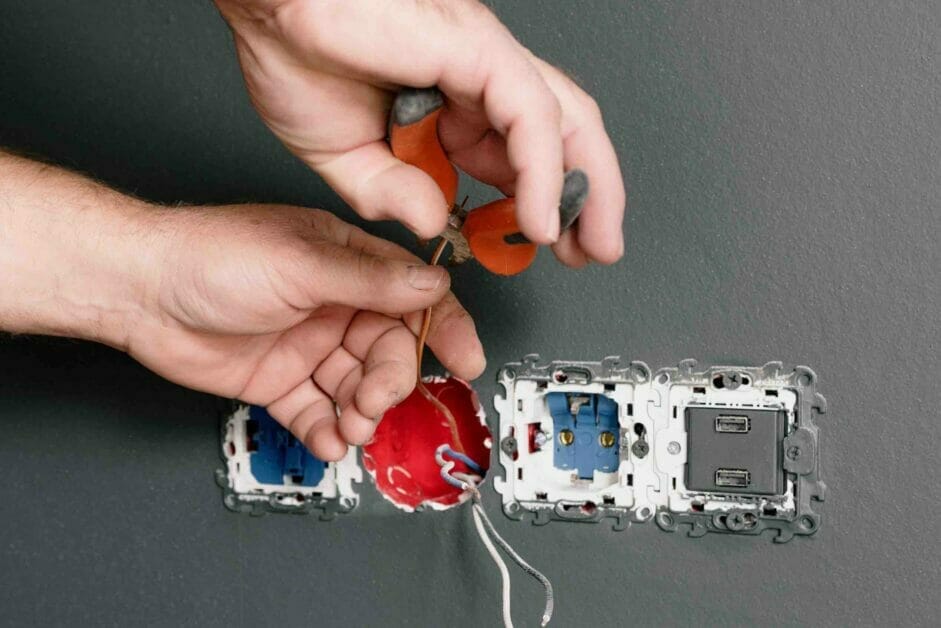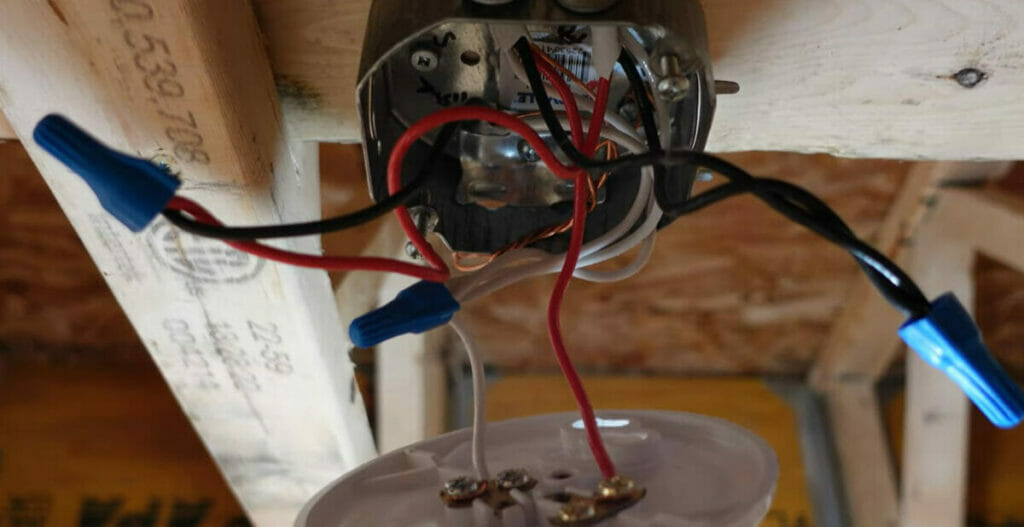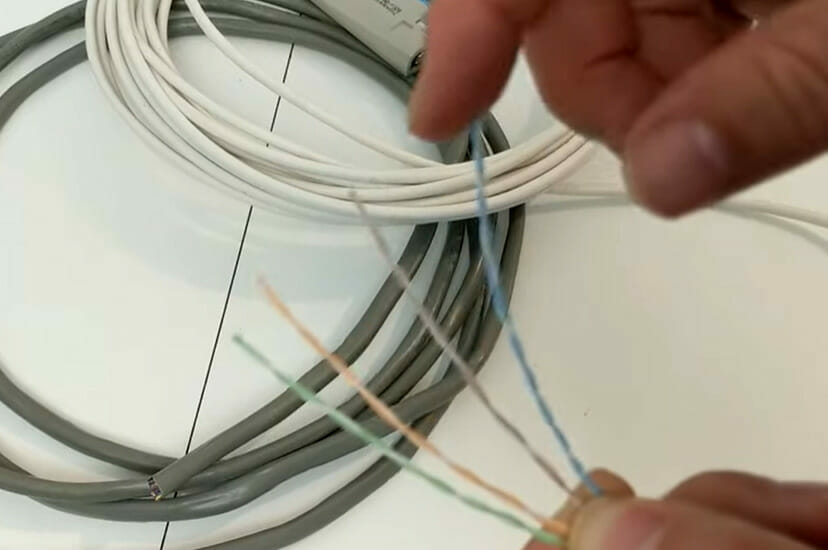What Color is the Positive Wire? (Wiring Differences)

Navigating wires can be tricky, especially when unsure about the color codes. If you’ve ever wondered what color is the positive wire? You’re not alone. It’s a common question in DIY projects and electrical work.
Navigating the maze of wiring color codes? Typically, the positive wire is red. Yet, depending on global regions or use, this might vary. While color codes give an initial understanding, always verify with a tester to avoid mishaps.
A glance into history reveals a tale of innovation, with safety paramount, driving the need for wire color standardization. From early electrical days with no set rules, today’s standards, although varied, prioritize user safety.
We’ll dive deeper below.

General Wiring Color Standards
When it comes to wiring, a rainbow of colors might leave you scratching your head. “What color is the positive wire?” you may ask. Let’s dive into this colorful world and shed some light on general wiring color standards.
Below is a concise table that provides a quick overview of the typical wiring colors used in different contexts.
| Application | Wire Colors | Description |
| DC Circuitry | Positive | Red |
| Negative | Black | |
| AC Circuitry | Hot/Live Wires | Red/Black |
| Neutral | White | |
| Ground/Earth | Green | |
| Car Audio & Low Voltage Applications | Positive power | Red |
| Ground | Black | |
| Remote turn-on | Blue/White Stripe | |
| Speaker | White/Grey/Green/Purple |

Different Systems and Their Conventions
Let’s dive into the world of wiring colors and codes, shall we?

Household Wiring
The first stop we’re making is in our very own homes. If you’ve ever peeked behind your power socket or tried changing a light switch, you might have noticed a couple of different colored wires.
Different regions worldwide follow distinct color conventions for household wiring to ensure safety and consistency. While many people are familiar with the wiring colors in their own country, it’s essential to be aware of these differences, especially if you are working or traveling abroad.
Here’s a concise table summarizing the typical household wiring colors across various regions:
| Region | Positive/Hot | Neutral | Ground |
| North America (US) | Black | White | Green or bare |
| Europe | Brown | Blue | Green with Yellow Stripe |
| Australia / New Zealand | Brown or Red | Blue or Black | Green or Green with Yellow Stripe |
| UK | Brown | Blue | Green with Yellow Stripe |

Automotive Wiring
Next up on our journey: cars! Imagine me with my tool belt leaning over a car engine here, folks. There isn’t a standard in automotive systems since each manufacturer has their own unique setup. Most commonly, red denotes the positive wire.
Although general industry standards exist, specific colors can vary between manufacturers and models. The following table provides a general overview of wiring colors for different car models:
| Car Model | Positive Power Supply | Ground | Remote Turn-on | Speaker Connections |
| Generic | Red | Black | Blue/White Stripe | Varied Colors |
| Toyota | Red | Black | Blue | Green, Purple, etc. |
| Honda | Red | Black | Blue | Gray, Pink, etc. |
| Ford | Yellow | Black | Blue/White Stripe | Orange, Brown, etc. |
| Chevrolet | Red | Black | Yellow | Tan, Light Green, etc. |
| BMW | Red | Brown | Blue | White, Blue Stripe, etc. |
| Mercedes-Benz | Red | Brown | Blue/White Stripe | Beige, Gray, etc. |

Industrial and Commercial Wiring
Our last stop brings us to industrial and commercial establishments – think factories and office buildings here, folks! These follow similar rules as household wiring but with more variations due to higher voltage requirements.
With these systems often using a three-phase electricity supply, blue typically signifies positive along with red and black depending on whether it’s single or three phases.
The table below provides a general overview of the typical wiring color conventions used in industrial and commercial settings:
| System Type | Hot/Live | Neutral | Ground/Earth | Comments |
| Single Phase (US) | Black or Red | White | Green or Bare | The standard for most US facilities |
| Three Phase (US) | Black, Red, Blue | White | Green or Bare | Industrial and large commercial |
| Single Phase (EU) | Brown | Blue | Green/Yellow Stripe | Standard for EU installations |
| Three Phase (EU) | Brown, Black, Grey | Blue | Green/Yellow Stripe | Industrial settings in the EU |
| Single Phase (UK) | Brown | Blue | Green/Yellow Stripe | Standard UK practices |
| Three Phase (UK) | Brown, Black, Grey | Blue | Green/Yellow Stripe | Large commercial settings in the UK |

Special Cases
Let’s dive into some special situations that can throw a curveball at you when identifying the positive wire. In most cases, red is your go-to color for positive wires. But it’s not always as straightforward as that.
The table below provides an overview of the typical wiring color conventions used in these specialized contexts:
| System Type | Color | Function/Purpose |
| Audio Systems | ||
| Car Audio | Red | Positive power supply |
| Black | Ground | |
| Blue/White Stripe | Remote turn-on | |
| White/Grey/Green/Purple | Speaker connections (with their striped counterparts) | |
| Telephone Cables | ||
| RJ11 | Green | Tip |
| Red | Ring | |
| Black | Tip 2 (for 2nd line) | |
| Yellow | Ring 2 (for 2nd line) | |
| Ethernet Cables (RJ45) | ||
| T568A Standard | Green with White Stripe | Transmit+ (TX+) |
| Green | Transmit- (TX-) | |
| Orange with White Stripe | Receive+ (RX+) | |
| Blue | Unused (in 10BASE-T and 100BASE-TX) | |
| Blue with White Stripe | Unused (in 10BASE-T and 100BASE-TX) | |
| Orange | Receive- (RX-) | |
| Brown with White Stripe | Unused (in 10BASE-T and 100BASE-TX) | |
| Brown | Unused (in 10BASE-T and 100BASE-TX) |

Safety Precautions
Before we wrap things up, I’d love to discuss something incredibly important – safety precautions. You see, dealing with electrical wires isn’t something you should take lightly. It’s crucial always to put safety first!
- Key Safety Point: Always disconnect the power before working on any wiring project. This might seem obvious, but it can be surprisingly easy to forget when you’re in the thick of things.
- Color-Coding Doesn’t Guarantee Safety: Never assume a wire is safe to touch just because it’s color-coded. Even if a wire is supposed to be positive or negative based on its color, there could still be mix-ups.
- Use Protective Gear: Protective gear is your best friend when dealing with electricity. It shields you from potential sparks and helps prevent accidental contact with live wires.
- Other Important Precautions:
- Ensure your tools are insulated
- Keep your work area dry
- Never handle wiring if you’re feeling tired or distracted
Frequently Asked Questions
- Can I rely solely on color codes when working with wiring?
- No. While color codes provide a helpful guide, it’s always safest to test wires using a multimeter or voltage tester. Mistakes and mix-ups can happen, so always verify before making connections.
- Why do some devices have more complex color coding than others?
- Devices with more sophisticated functionality (like car audio systems or computer networking cables) often require a broader range of signals and power connections, leading to a more complex color-coding system.
- I’ve encountered a wire color not mentioned in any guide. What should I do?
- In such cases, consult the device’s manual or the manufacturer’s guidelines. If you’re still uncertain, it might be wise to seek expert assistance. It’s always better to be safe than sorry.
- Has the digital age influenced wiring color codes?
- While the fundamental principles of wiring remain, the proliferation of digital devices has introduced new standards, especially for data transmission (like Ethernet cables). These standards often come with their own unique color codes.
- Are there any efforts to standardize wiring colors internationally?
- International bodies like the International Electrotechnical Commission (IEC) do work on creating global standards. However, the entrenched practices in various regions make complete standardization challenging.
- How have safety standards influenced wiring color codes?
- Safety has always been a primary driver behind the standardization of wiring colors. Technicians and DIY enthusiasts can work with reduced risk by providing a consistent and understandable system.
- Are there any legal implications if I don’t follow the standard color codes in my installation?
- Depending on the region and the nature of the installation, there may be legal and safety regulations requiring adherence to specific color codes, especially in commercial or industrial settings. Non-compliance can lead to penalties or void warranties.
References
Website Resources:
- Mike Holt Enterprises. https://www.mikeholt.com/
- Electrical Construction & Maintenance (EC&M). https://www.ecmweb.com/
- The Spruce. https://www.thespruce.com/
- IEE (Institution of Electrical Engineers). https://www.ieee.org/
Video Resources:
Electrician U
Jeff Nicol
DIY Telecom
RSP Supply
SuperfastMatt
TipsNNTricks
Conquerall Electrical
